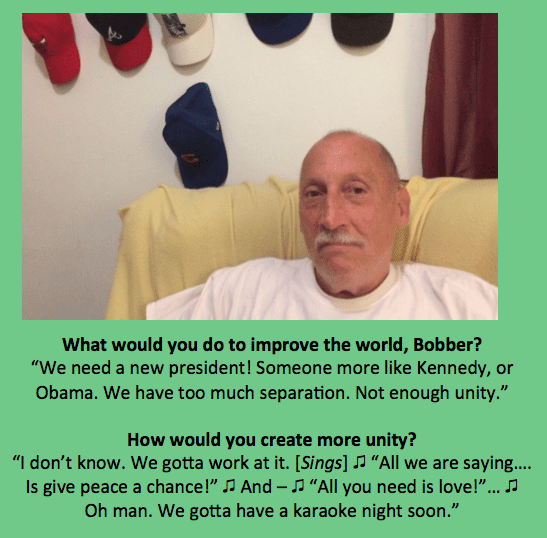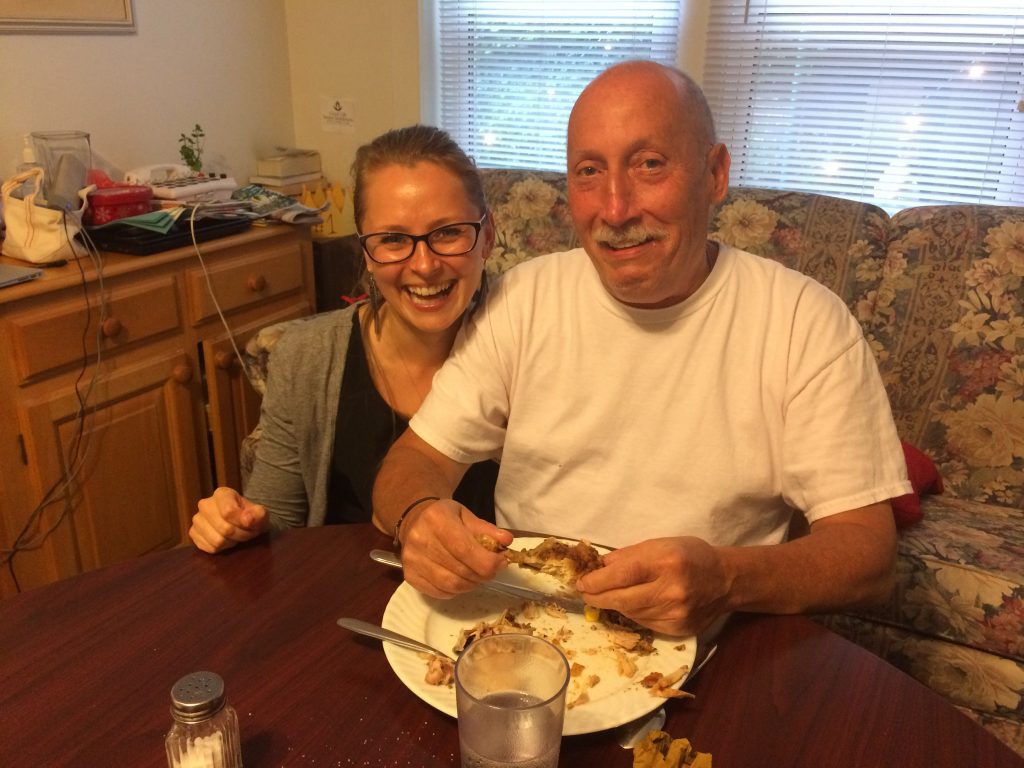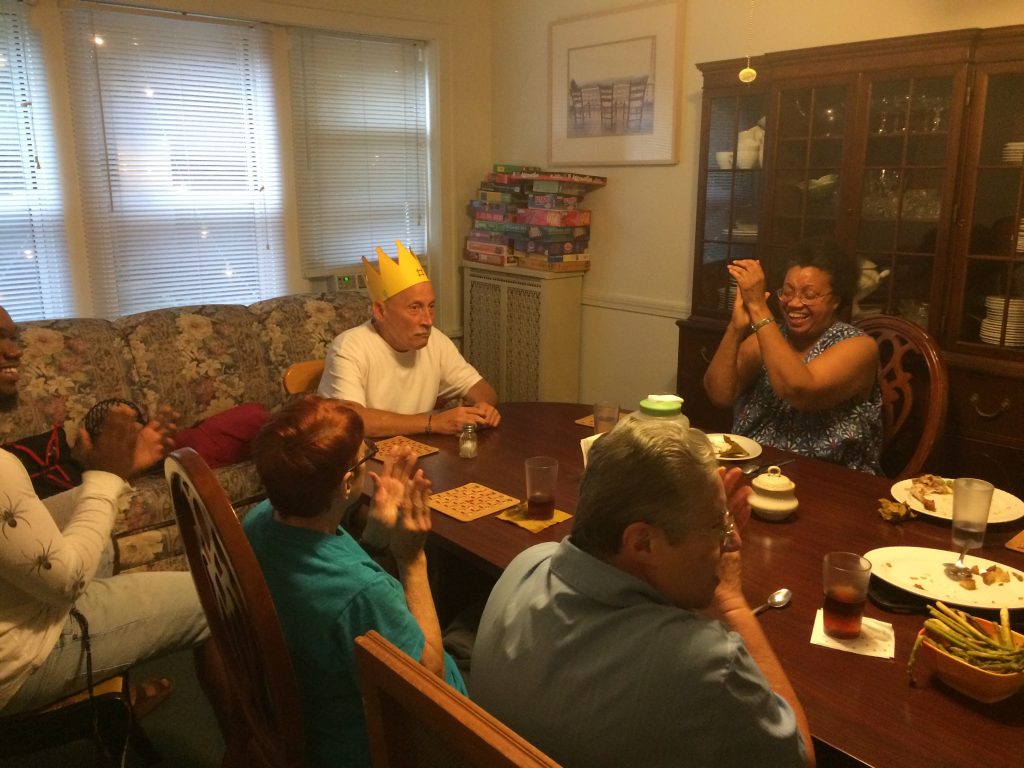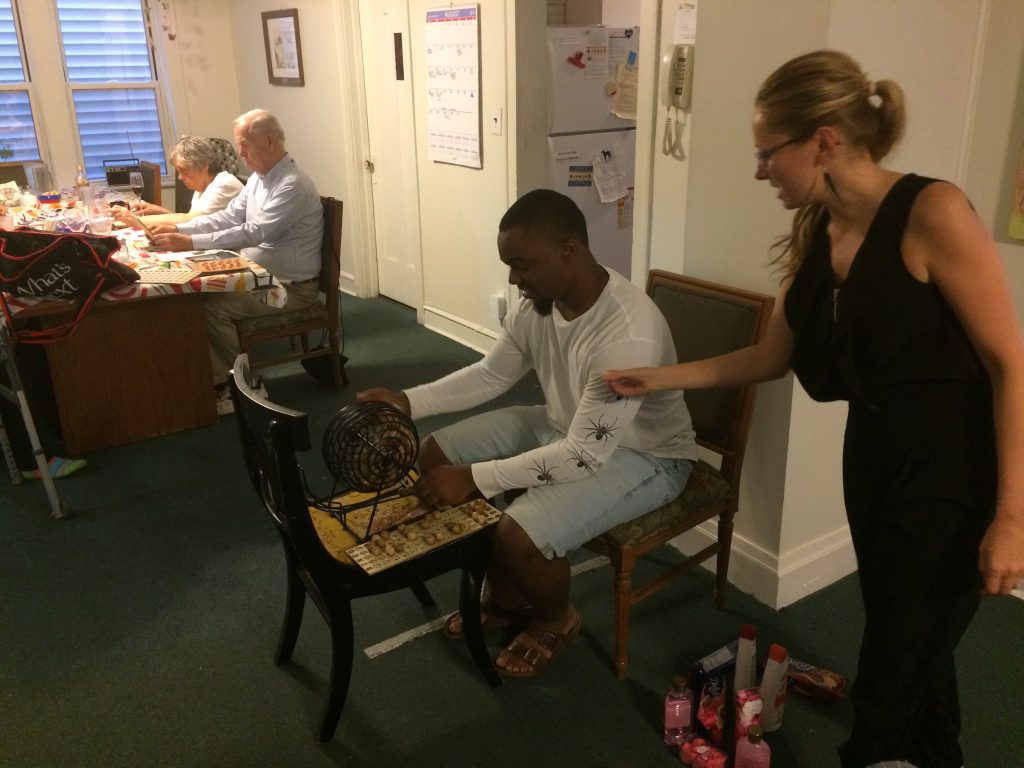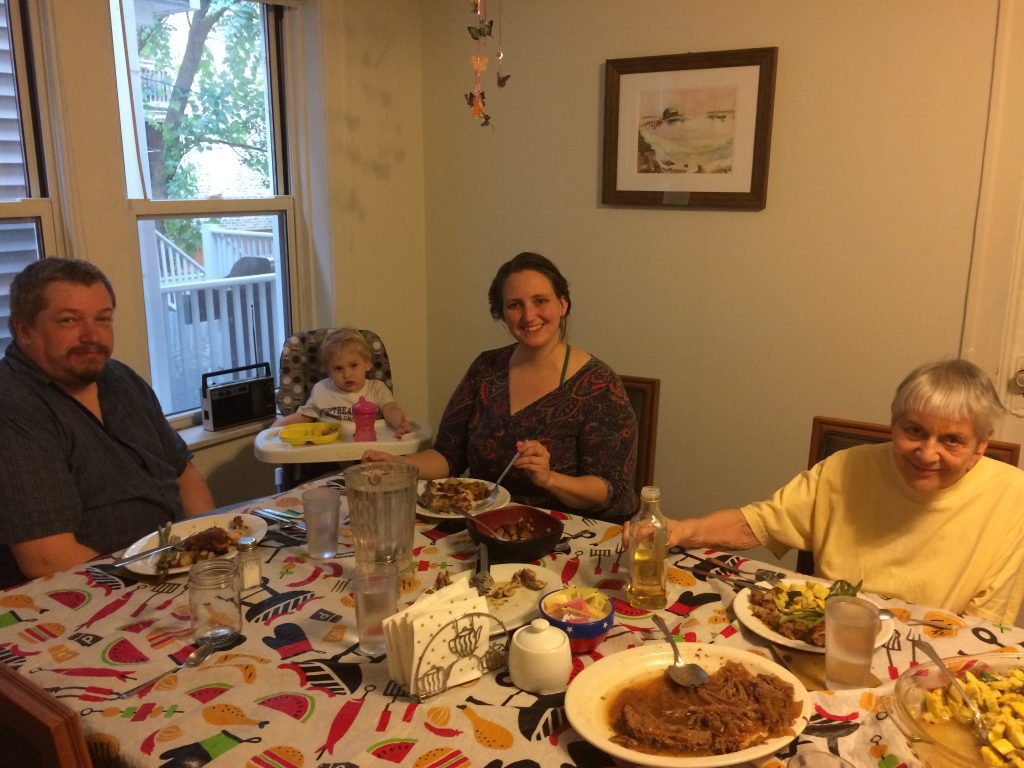It’s community dinner night at Pat Crowley House. Golden oldies are wafting through the room – Good Vibrations by the Beach Boys, Come Together by the Beatles – thanks to Mike, a young college student who is tonight’s DJ. Ten elders settle into the dining room, passing iced tea and wine, as more young people weave between the two tables, serving heaping plates of chicken, pot roast, potatoes, asparagus, and summer squash. Two-year-old Henry is babbling away in his high chair. Bobber, one of the older residents, turns to his friend Myra and asks if she’s doing alright. “Uh huh!” she says, and she reaches out to give him an affectionate scratch on the back of his head.
This three-story, six-apartment residence is one of three buildings in Chicago that provides affordable, intergenerational housing to 90 elders and the young people and families who live with them. Housing Opportunities and Maintenance for the Elderly – H.O.M.E. – has been rooted in the city for 35 years, and as their executive director Bruce Otto told the Chicago Tribune, “We haven’t been able to find anybody that does exactly what we’re doing.”
“At the nursing home, they gave me only 30 dollars out of my social security check,” Robert “Bobber” Marguerite says. “Here, they give you 20 percent.” He uses the extra income to take friends out for tacos or Vietnamese food, or indulge in the occasional foot soak at a neighborhood nail salon. “The nursing home sucked,” he says, “Here, we’re like family. Everybody’s equal.” Bobber, who worked as a bartender and managed a café for 43 years, proudly displays a 1966 Battle of the Bands certificate in his bedroom, and jokes about starting a new group called The Bipolar Blues Band.
The residence houses up to 12 older people and 4 residential assistants, college students or young people with jobs who live here rent-free in exchange for about 20 hours a week of help, from laundry to meal prep to entertainment. Mike leads the group in a few rounds of bingo, the classic game of chance, spinning a cage of balls and pulling them out at random – “G45!… G45.” “B27!… B27.” The residents stare eagle-eyed at their cards, waiting for the moment that their game pieces will finally line up. Maggie, the house coordinator, provides tasty and sweet-smelling prizes – but the real pleasure is the triumph of calling out “BINGO!,” and cheering on friends as they win. Some residents even give their prizes away.
“When I first got here,” Mike says, “it was different, living with older people. I’m the youngest, I’m 20. If I want alone time I can stay upstairs, but usually I like to come down. It’s always fun talking to these guys. It’s just funny, going through the day, hearing the things that go on around the house.” Mike learned about HOME through Loyola University, where he is studying criminal justice and working towards a career as a defense attorney. Between classes and work around the house, Mike keeps up an active social life, and the residents benefit from it too, mingling with his friends and girlfriend when they come over for barbecues.
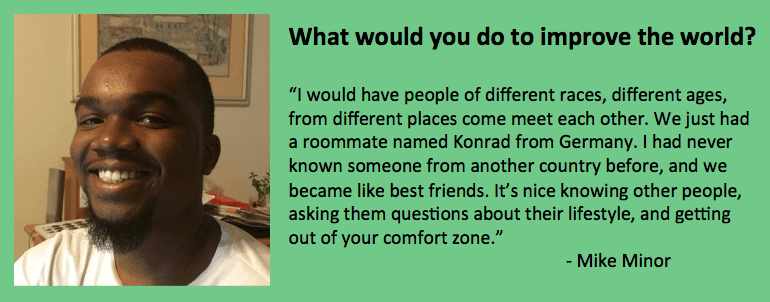
(For more about HOME’s international connections, and to read stories about more residents, check out Konrad’s blog)
Beth and Jason LaBrosse live in the largest apartment on the top floor, with their two-year-old son, Henry. “We got lucky!” Beth says. They found the apartment on Craigslist, a local classifieds site. Unlike the resident assistants, who are more involved in daily duties, they pay rent, but they occasionally barbecue for the house or come downstairs for community dinners. “It’s nice that our rent helps support this nonprofit mission,” says Jason. “So one of our biggest monthly expenses is more than just a financial transaction. Voting with our dollar, we’re big about that.”
Beth grew up in a two-flat where the doors were never locked, and she was free to run up and down to visit her grandmother and aunts. “For me,” she says, “this was normal. It was weird as I got older to realize that not everyone grows up this way. I think people should talk about this more in their urban planning.”
In Could Architecture Keep You Young?, author Tracy Moran explores intergenerational building plans such as Future Sølund in Copenhagen, which will provide senior housing as well as a nursery and kindergarten on the ground floor. As designer Mads Mandrup explains, they envision a city that is “not moving around the building, but in and through it.”
A recent documentary about 4-year-olds who spent six weeks in a retirement home has won hearts in the UK. The elders’ mood scores improved 70%, and their mobility improved 80%, as this short video explains. The project was inspired in part by Mount Intergenerational Learning Center in Seattle, which has been operating a preschool inside a retirement home for 25 years.
As Jason LaBrosse says about raising his son with Beth at Chicago’s Pat Crowley House, “Having intergenerational, interclass living, having as many webs as you can build – it’s like a safety net.”
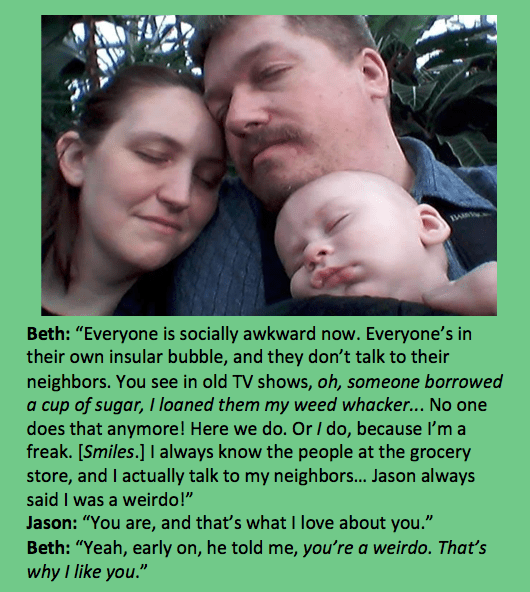
“In this society, the portrayal of a person is always the young, the beautiful – but I think it’s the opposite. The older you get, the more beautiful you become.”Maggie Mokrzycka, Good Life Coordinator for the house
Maggie’s close bond with her grandmother inspired her to earn a master’s degree in gerontology, the study of aging. She juggles a great deal to keep the residence running smoothly – from arranging to fix the plumbing to organizing residents’ transportation to appointments, coordinating volunteers, and providing emotional support. “I always keep seniors’ feelings in mind, and bring them into the conversation, instead of deciding what we think would be best,” she says. “In reality, that’s not the best, if they’re excluded from that conversation.”
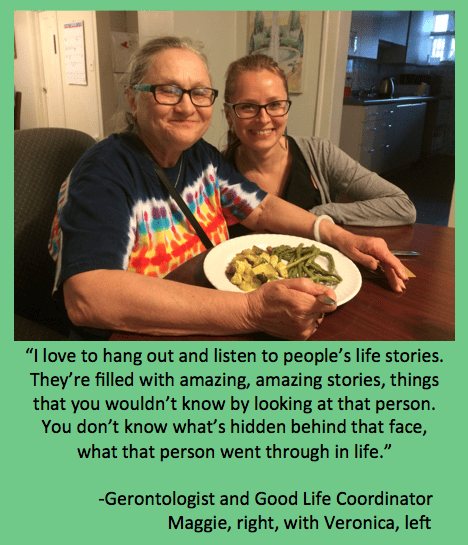
H.O.M.E.’s reach extends beyond their three buildings and the 90 seniors who live in them. They serve even more people around the city with a shopping bus, low-cost moving services, home repair and weatherization services, and they have partnered with Elevate Energy to make all their buildings energy efficient. In the coming years, they plan to expand their intergenerational living offerings to the south and west sides of Chicago. As Maggie says in the video below that marks HOME’s 35th anniversary: “The founders were ahead of their time.” Our world today still needs many more places that will support the mingling of different generations. But this vital mission to bring people together to lean on one another is as old as humanity itself.
